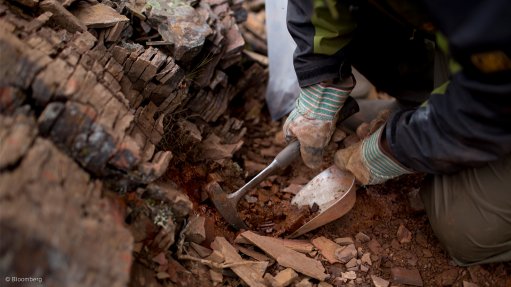
Photo by: Bloomberg
PERTH (miningweekly.com) – A new feasibility study into the Frieda River copper/gold project, in Papua New Guinea, has found that a government investment of some $739-million into infrastructure would be required to make the project feasible.
The new feasibility study, conducted by PanAust, adopted a fundamentally different approach to the project compared with the 2016 prefeasibility study (PFS), considering the Frieda River project within a broader regional development context, and requiring extensive third-party or government investment as a prerequisite.
The new feasibility study estimated that the government would need to invest some $739-million into road, airfield and port upgrades, while a further $351-million would need to be spent on a 340-km slurry pipeline connecting the Frieda River process plant with the Port of Vanimo.
The pipeline would be operated by a third party on commercial terms.
The 2016 PFS into the Frieda River project had relied on barge transport down the Sepik river to deliver the concentrate to port.
In addition to these changes, the feasibility study also generated revised production metrics and overall project economics compared with the PFS, with the mine and process plant, as well as a hydro-electric facility to require a capital investment of $6-billion.
The updated feasibility study estimated a life-of-mine yearly production average of 670 000 t of concentrate, containing 175 000 t of copper and 230 000 oz of gold, over a mine life of some 33 years.
The 2016 PFS estimated that the Frieda River project could produce 175 000 t/y of copper and 250 000 oz/y of gold over 17 years, based on a large-scale openpit mining operation, that would cost some $3.6-billion to develop.
While both studies included the development of a hydro-electric power station integrated with a tailings and waste rock storage facility, the updated study relocated the proposed facility in order to increase power production to meet the processing requirements, and to enable the sale of excess power.
ASX-listed Highlands Pacific, which owns a 20% stake in the project, said on Monday that the updated feasibility study represented a further step towards unlocking the value of the Frieda River project.
“A great deal of work has gone into the preparation of this visionary and ambitious development concept, aimed at overcoming some of the many logistical challenges associated with construction of a project of this scale in one of the more remote regions of Papua New Guinea,” said Highlands MD Craig Lennon.
“The project, as currently proposed by PanAust, faces significant hurdles, not least of which is the substantial capital cost, but also the need to identify government and other third parties to develop and fund the roads and other regional infrastructure required as a prerequisite to construction of the project.”
Lennon said that the Frieda River project had the potential to generate major economic benefits for Papua New Guinea, for the communities in the region, the project participants, and for the shareholders of Highlands, noting that the company would seek to work with PanAust and other stakeholders in order to further refine the project and improve returns, where possible.